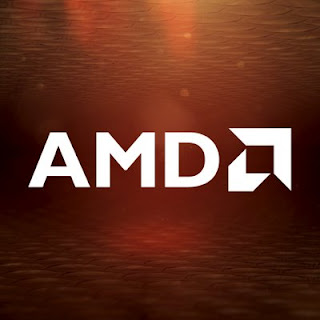 |
| AMD Logo |
In years past I have repaired computers, installed operating systems, and built computers from scratch both for friends and for profit. So before I go on much further, I should point out that, yes, I am biased and have my strong convictions regarding how I like to use Linux, and what I think works best. Of course, you likely knew about certain biases we share on this site since you're reading this right now ;)
I'm saying this upfront, because biases are inevitable. My collective experiences, and therefore biases, are what brings me to this article and the reasoning for writing it.
When perusing forums and various internet discussion groups, I've seen too many people get tripped up on installing graphics drivers. This is especially true of people coming from other operating systems and therefore assuming you need to install graphics drivers from the company's website. This is where things get tricky, as certain drivers only work with or are supported on certain distributions, and certain versions of those certain systems. This assumption also required you to use proprietary and closed-source drivers, which may not sit well for those of use who prefer or require an open source solution.
As always, Your Mileage May Vary. Having said that...on with the show!
So you want to game on Linux, and are looking to build or upgrade your computer. If and when you find yourself in this position, I'm going to recommend that you seriously consider using AMD for your graphics horsepower. My reasoning is as follows:
- AMD's drivers are open source. Open source is good
- They are included in the standard and mainline kernels
- They tend to just work out of the box
- Tools exist for keeping the other required moving parts updated and working properly (e.g. Mesa and friends)
- The upcoming Linux 5.x kernels will support AMD's Freesync technology
- Generally speaking, the divers are still improving with each release and are now on par with the closed source AMDGPU-Pro drivers
- The open source drivers are the preferred way to go both now and going forward, as this is the direction AMD is heading regarding Linux. See: Ubuntu Documentation: AMDGPU-Driver
 |
| You can run the command lspci -k | grep -EA3 'VGA|3D|Display' in Konsole to get info on your current hardware, as well as to confirm that the AMDGPU driver is in use |
Setting it all up
In order to get it all working properly and hassle-free, you'll need to do the following steps. This assumes you're running Ubuntu or an Ubuntu-derivative (Kubuntu, Xubuntu, KDE Neon, etc.)
Install the latest Mainline Kernel:
We provide a detailed look on ways to install the latest kernel here, but for a quick and dirty method, head over to the Ubuntu Mainline Kernel page here, and select the latest stable kernel for installation. At the time of this article, the current stable is v4.20.13.
A reboot will be required once again. Verify you're running the newer kernel by checking your 'about system' menu option, or via a terminal by typing "uname -r".
Install the Padoka Stable PPA (Personal Package Archive)
The Padoka Stable PPA provides the latest stable Mesa, Wayland, and LLVM drivers for your system. As Ubuntu is a 'snapshot in time' release, these components are not upgraded automatically to the latest stable versions available. This step fixes that.
The PPA is located on Launchpad here, and both the current Long Term Support Release (LTS, currently at version 18.04), and the latest release Ubuntu releases are supported.
Install by typing the following in a terminal:
sudo add-apt-repository ppa:paulo-miguel-dias/pkppa && sudo apt updateNext run
sudo apt full-upgradeand reboot again. That's all there is to it, and now your graphics subsystem will always be up date with these two simple steps.
Install Steam
Finally, install Steam on your system and you're ready to game!
Again, there are other ways to set up a gaming system on Linux. Most are more complicated and involve downloading drivers from the vendor's website and in many cases this leads to varying degrees of success, and may also lead to confusion as to which driver should be downloaded as well as perhaps not being on the latest feature set for newer games and hardware out there.
Your thoughts and experiences welcome in the comments below.
 | |||
| Playing Transport Fever on my Linux gaming PC |





No comments:
Post a Comment